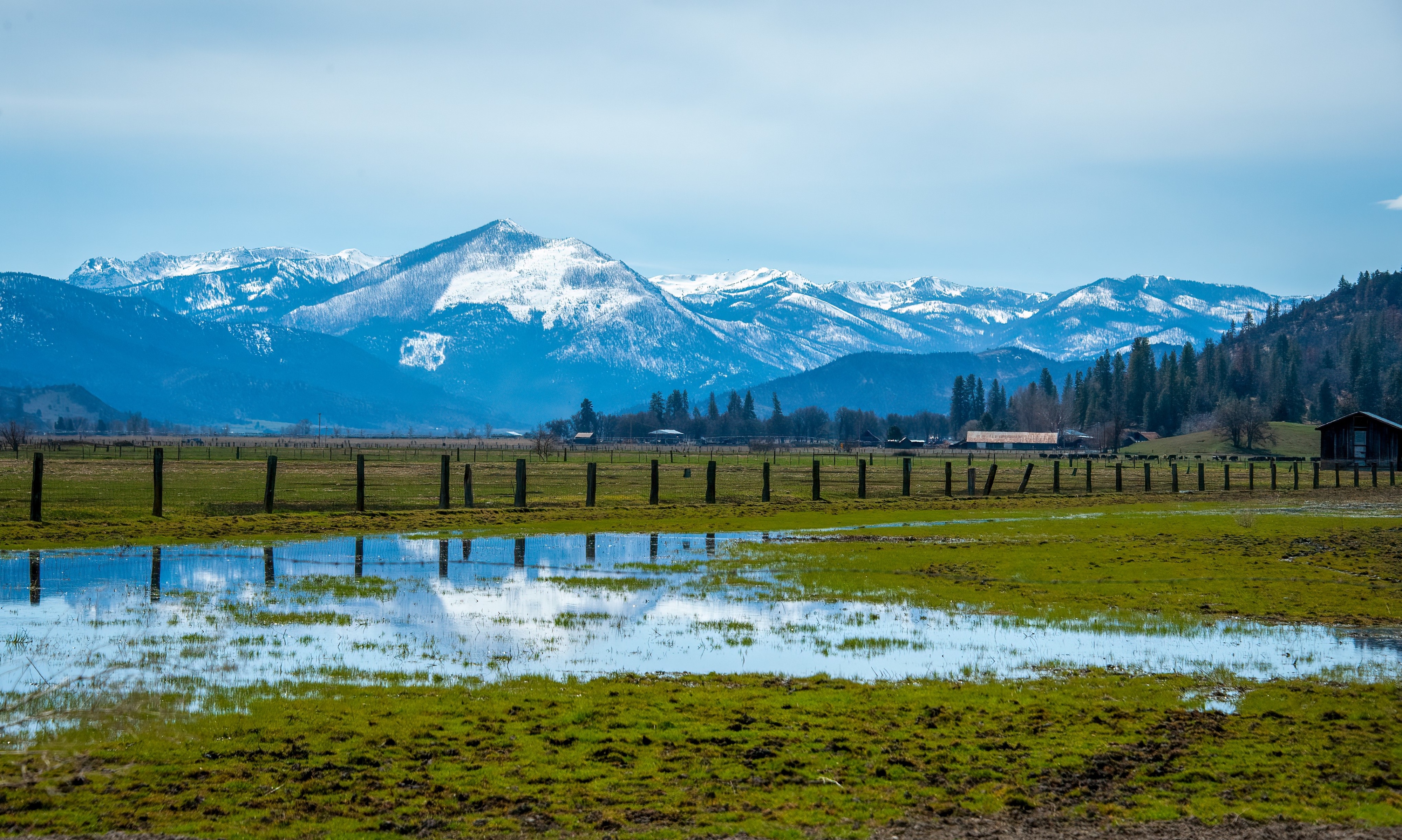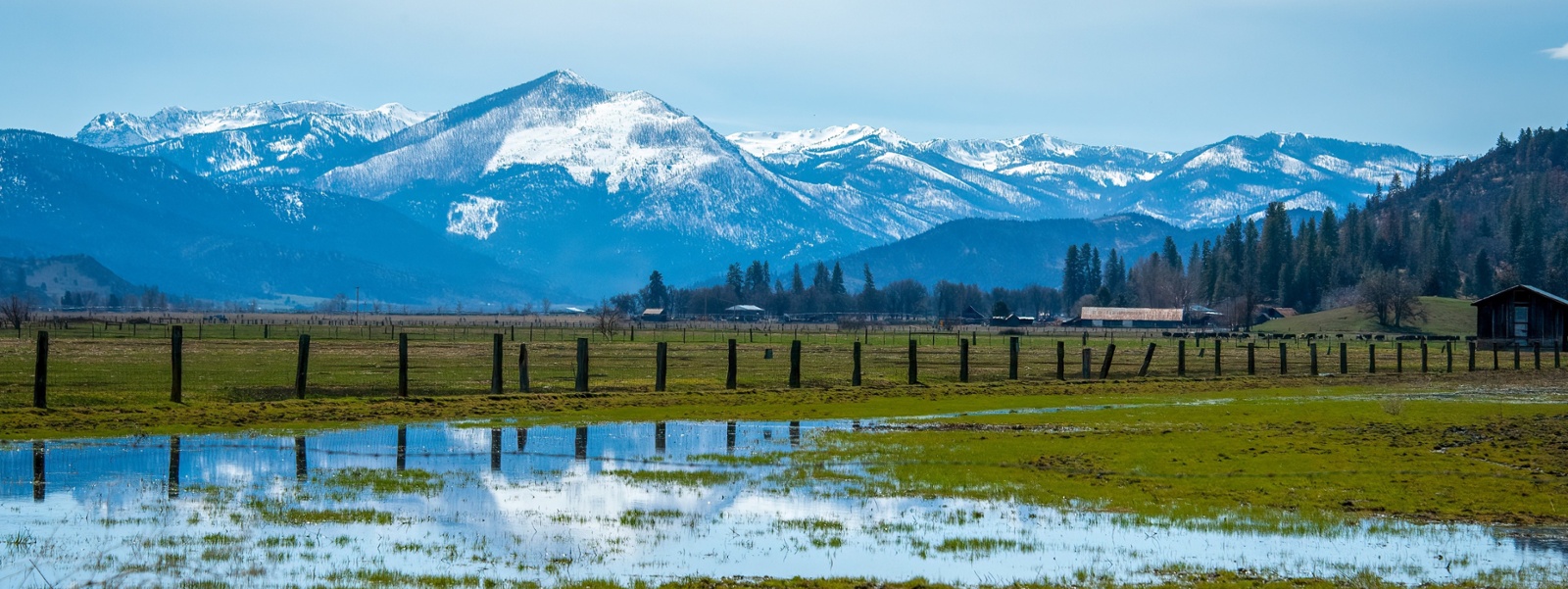State readopts curtailment for Scott, Shasta tributaries


By Christine Souza
Even though the clock doesn’t run out on winter for another eight weeks, state water officials are bracing for another dry year for the Scott and Shasta rivers in Siskiyou County.
At its Dec. 19 meeting, the California State Water Resources Control Board unanimously readopted an emergency drought regulation that curtails water rights in the Scott and Shasta rivers, affecting farmers and ranchers. The emergency regulation had expired last summer.
Readopted every year since May 2021, when Gov. Gavin Newsom declared a drought emergency, the order limits surface-water diversions and groundwater pumping. It also prioritizes minimum flow recommendations from the California Department of Fish and Wildlife to protect threatened coho and other fish.
The regulation ensures water supplies for human health and livestock and encourages the use of voluntary efforts in lieu of curtailments. Individual groundwater users can enter a number of different local cooperative solutions to avoid curtailment. One example is a general water-use reduction of 30% in the Scott River or 15% in the Shasta River.
Speaking on behalf of affected farmers, Siskiyou County Farm Bureau President Ryan Walker discussed the ongoing water cutbacks, including in 2023, a year he said broke the cycle of drought but in which curtailments continued.
Walker asked water board members to reconsider readopting the curtailment order. He told the board adopting the emergency order allows the state to sacrifice due process and environmental review in favor of single-species management.
“The governor’s refusal to rescind his emergency drought declaration for the Scott and Shasta watersheds is nothing less than an authoritarian attempt to circumvent the legal protections afforded to the citizens of California, including the residents of Siskiyou County,” said Walker, a rancher from Montague. “California law imposes a public trust obligation on this board to fully review the impact of your actions on wildlife, including the sandhill cranes that feed in our irrigated pastures, the ducks that nest in our wetlands supported by our irrigation, and the elk that graze our fall regrowth and drink out of our ditches in the fall.”
Sari Sommarstrom, a retired watershed consultant and a founder of the Scott Valley Agriculture Water Alliance, told the board she wanted to set the record straight about board staff’s fish population data.
“The state water board draft resolution facts do not support some of the findings,” Sommarstrom said, adding that Department of Fish and Wildlife reports contain more accurate data.
“Asserting that steelhead adult returns showed a record low in 2022 is disingenuous at best,” she said. “The department’s out migrant reports of juvenile steelhead leaving the river offer a more complete picture, and they also do not show a significant decline.”
Many farmers, including Scott Valley rancher Theodora Johnson, a founder of the Scott Valley Agriculture Water Alliance, thanked the board for adopting revisions to the curtailment regulation. These include helping irrigators improve groundwater through recharge and adding more local cooperative solutions, which Johnson said offer more flexibility as alternatives to curtailments.
“Helping us do more winter recharge through our stock water ditches is going to be greatly helpful,” she said. “We don’t have a water quantity problem; we have a water timing problem, and that would be greatly alleviated if we improved our underground water storage.”
Siskiyou County farmer Brandon Fawaz of Etna thanked the board and staff for revisions to the regulation. However, he said, farmers were hoping for a better outcome.
“Growers would have liked to see more flexibility, and the environmental community would have liked to have seen less, so it appears the water board has balanced its duties,” he said.
Fawaz added, “As we continue to look at the water demands needed for the resources in our area, those of us in agriculture have said many times, we cannot be the only knob that gets adjusted.”
Walker asked the board and other stakeholders to work with irrigators to develop “a more productive, collaborative way forward” in the state’s efforts to set permanent, minimum flow requirements for the Scott and Shasta river tributaries.
“Reviewing the constant stream of draft flow regulations and battling errant comments take away time from finding real solutions,” Walker said. “Forest thinning projects, recharge projects and water-storage projects are all put on hold so we can engage in this apparently unending emergency regulatory process.”
Last July, the Karuk Tribe submitted a petition requesting the state water board use its emergency powers to set permanent flows to help fish. The state directed staff to develop a plan to adopt interim flow measures to support salmon. It also asked farmers, tribes and other interested parties to work together to develop plans for long-term restoration of the salmon fishery.
Alexandra Biering, California Farm Bureau senior policy advocate, urged the state water board and staff to keep the dialogue open with affected irrigators.
“In previous meetings, the board and staff suggested there may be a need for some amount of structured facilitation support for tribes, diverters, landowners and technical experts to further the conversations that are necessary to develop a durable, long-term management plan to support salmon in the rivers,” she said.
Despite the state’s budget constraints, Biering said she hopes momentum continues with local participation by farmers and tribes to develop long-term solutions.
E. Joaquin Esquivel, chair of the state water board, also called for collaboration.
“The hydrology of these watersheds is complex, but the cooperation among all parties to find solutions that balance the needs of communities and the environment has been encouraging,” Esquivel said. “I am hopeful that this regulation continues to drive engagement toward collaborative solutions.”
(Christine Souza is an assistant editor of Ag Alert. She may be contacted at csouza@cfbf.com.)




